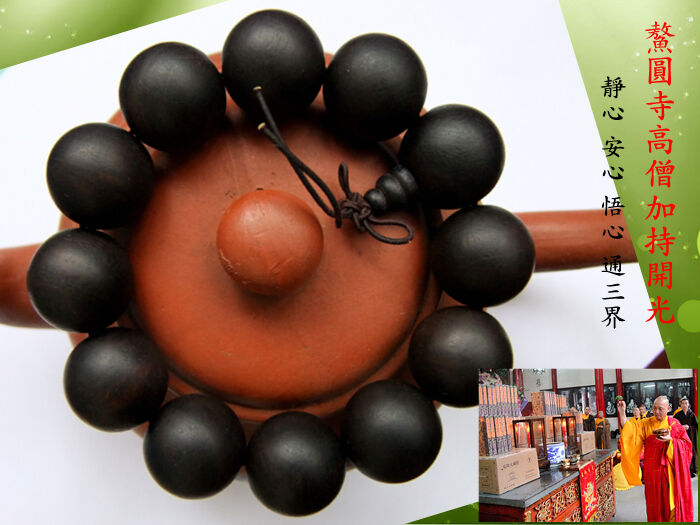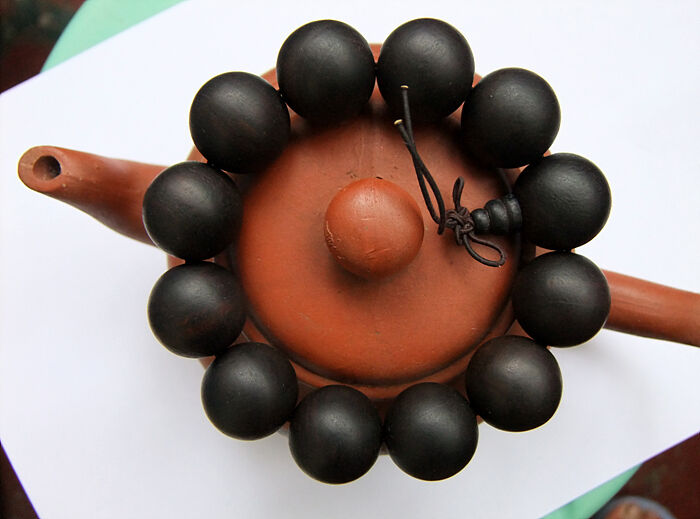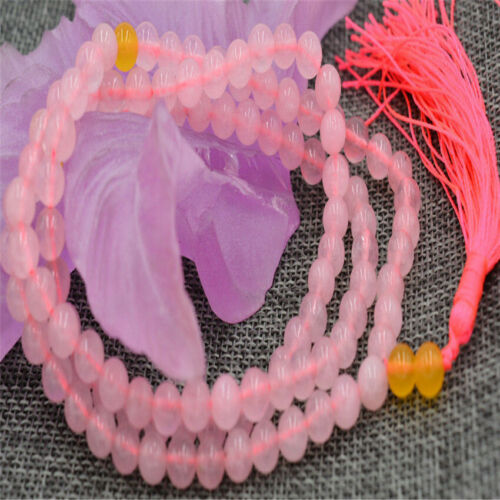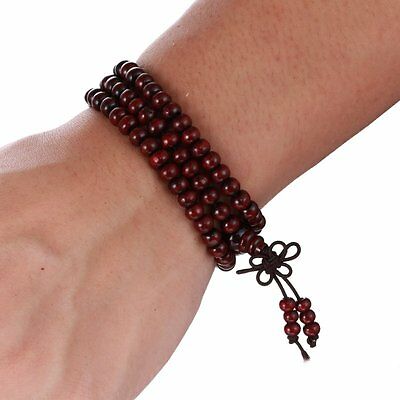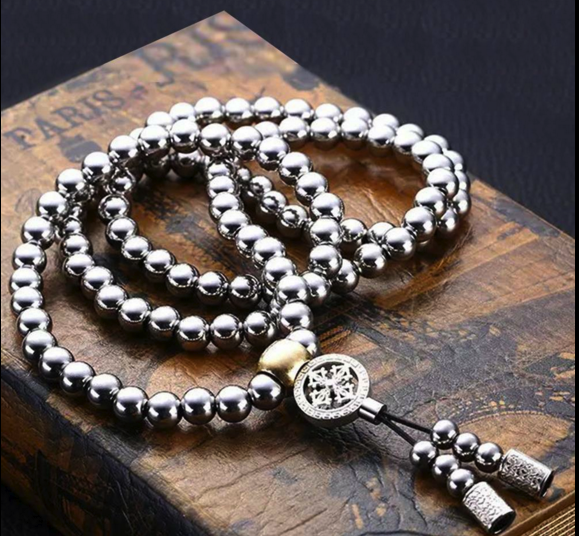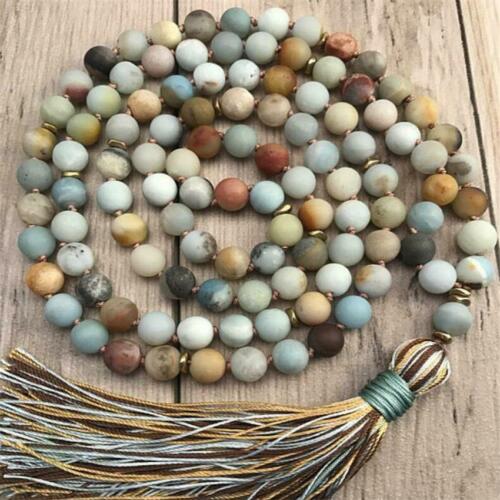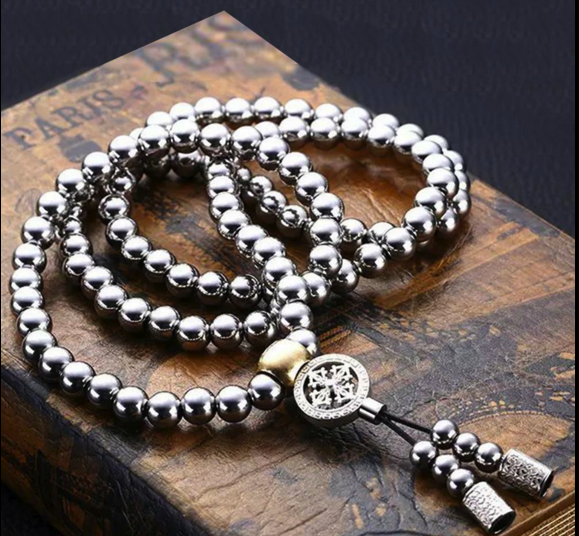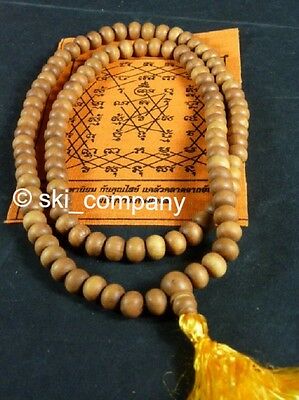-40%
HaiNan 20 mm Agarwood Aloewood Buddhism Mala Meditation Prayer beads 水沉香#2181
$ 117.25
- Description
- Size Guide
Description
1717"Screen resolution: 1024x768 85Hz
WELCOME TO
CHINATOWN-ANTIQUER
TIBET: The Mysterious Land, The Unique Ancient Culture
No.2181: HaiNan Five fingers mountain Agarwood 20 mm Eaglewood Gaharu Aloeswood Buddhism Meditation Prayer beads Mala buddha beads Bracelet / Bangle(海南水沉香)
Size
Bead diameter 20.00mm
(Color may not appear exactly as in real life due to variation between computer monitor resolution and lights.)
Weight
Net weight 57 grams
Material
Agarwood aloewood Aloeswood Eaglewood gaharu Agallocha
Friendly reminder:
Following is a sample hand-measured dimensions (approximately), the Measurements There may be some errors. Moreover, color may not appear exactly as in real life due to variation between computer monitor resolution and lights.
This is 100% natural agarwoods or gaharu I obtained from my supplier. (colour may differs depends on your monitor settings). The quality is from AAA as told by the supplier. Native to: HaiNan agarwood bracket beads. Aloeswood (Agarwood) is one of the most rare and precious woods in the world, prized for its rich and wonderful fragrance. It has been used for centuries in religious ceremonies, as well as in Traditional Chinese medicine. It is believed to have both mental and physical medicinal benefits-with properties thought to balance the mind and body and relieve pain. Aloeswood is also believed by many to have aphrodisiacal qualities.
Agarwood Agarwood can be used to carving statues. Production Offering Incense to Buddhas. Preparation of Traditional Chinese medicine Herbal. Chinese Buddhist believers with Agarwood carved Buddha. Very rare and precious. Due to large pieces of Agarwood has been very rare, but also because of their special physical, sculpture to be very careful. Agarwood or made from buddha prayer beads. Very rare. Is buddha prayer beads in the boutique. Absorbed hold Prayer beads, recite scriptures, praise buddha. Aroma quiet swing. Refreshing, resuscitation of wisdom. Increase the courage of your convictions. Help self-cultivation. Agarwood incense or worship with the Buddha. Or carving statues. Are of great merits and virtues.
One of the reasons for the relative rarity and high cost of agarwood is the depletion of the wild resource. In the world, Aloeswood is the most prized of all incenses,and the purest Aloeswood is pound-for-pound more expensive than gold! Aloeswood trees have sweet-smelling flowers,and are native to Hai nan of china ,Northern India, Laos, Cambodia, Burma, Malaysia, Indonesia and Vietnam. When an Aloes tree has fallen (from natural causes), a dark resin forms within its heartwood.This resin forms as an immune response, and the heartwood is then harvested for incense and medicinal uses.The older the tree, the better the quality, and the more expensive the wood. Aloeswood incense is used for both medicinal and spiritual purposes. As a medicine, it is a remedy for nervous disorders. For non- medicinal purposes, it is used to help people get in touch with their spiritual side, and thus, it is in high demand as a meditation aid. Those who use aloeswood incense claim that it has a great calming effect on the mind.But Aloes isn't just for medical and spiritual uses. Many feel it is a powerful aphrodisiac,and in some cultures the women scent their clothes as well as themselves with it.
In Ayurveda the oleoresin is highly prized as well. "The wood is acrid, bitter, thermogenic, digestive, carminative, deodorant, sudorific, andoyne, anti-inflammatory, anti-leprotic, depurative, cardiotonic, rejuvenating and tonic. It is useful in vitiated conditions of vata and kapha, halitosis, dyspepsia, anorexia, cardiac debility, skin disease, leprosy, foul ulcers, hypothermia, inflammations, rheumatoid arthritis, cough, asthma, hiccough, albuminuria and general debility. An external application of agaru is very useful in vomiting in children, pectoralgia due to pneumonia and cepalagia. The oil is astringent, acrid, bitter, thermogenic, depurative, alexeteric and anti-leprotic. It is useful in vitiated conditions of vata and kapha, rheumatoid arthritis, cough, asthma, bronchitis, skin diseases, leprosy and foul ulcers."
Aloeswood oil is known for bringing relaxation of the mind, warm the heart & calm the mind, it is a truly uplifting experience and open an avenue of peace and contentment. Aloeswood is very rare and pure quality like ours are even difficult to obtain.
Agarwood is the resinous heartwood from Agarwood trees, large evergreens native to southeast Asia. The trees occasionally become infected with a parasite mould and begin to produce an aromatic resin in response to this attack. As the fungus grows, the tree produces a very rich, dark resin within the heartwood. It is this precious resinous wood that is treasured around the world. The resin is commonly called Jinko, Aloeswood, Agarwood or Oud and is valued in many cultures for its distinctive fragrance, thus it is used for incense and perfumes.
One of the reasons for the relatively rarity and high cost of agarwood is the depletion of the wild resource. The odour of agarwood is complex and pleasing, with few or no similar natural analogues. As a result, agarwood and its essential oil gained great cultural and religious significance in ancient civilizations around the world.
The origin of the names of Aloeswood/Agarwood:
Agarwood is also known as aloeswood, ginko, jinko, aguilariawood, eaglewood, kyara, gharu, ghara. It has the aromatic fragrance of Agar or 'Oodh', a highly prized spiritual scent that has been used in the Tibetan Lamaseries for centuries.
Agarwood, also called, oodh or agar) is a dark resinous heartwood that forms in Aquilaria and Gyrinops trees (large evergreens native to southeast Asia) when they become infected with a type of mold. Prior to infection, the heartwood is relatively light and pale colored; however, as the infection progresses, the tree produces a dark aromatic resin in response to the attack, which results in a very dense, dark, resin embedded heartwood.
The resin embedded wood is commonly called gaharu, jinko, aloeswood, agarwood, or oud (not to be confused with 'Bakhoor') and is valued in many cultures for its distinctive fragrance, and thus is used for incense and perfumes.
One of the reasons for the relative rarity and high cost of agarwood is the depletion of the wild resource. Since 1995 Aquilaria malaccensis, the primary source, has been listed in Appendix II (potentially threatened species) by the Convention on International Trade in Endangered Species of Wild Fauna and Flora. In 2004 all Aquilaria species were listed in Appendix II; however, a number of countries have outstanding reservations regarding that listing.
The names of the Aloeswood/Agarwood wood always have something to do with its submergibility. But not all Aloeswood/Agarwood wood are submergible. Aloeswood/Agarwood wood is a mixture of resin and wood. The wood of Aloeswood/Agarwood trees is incompact with a proportion of only 0.4. When the percentage of resin is more than 25% in the wood, the wood can sink in the water. In fact, this kind of Aloeswood/Agarwood wood in which the resin content reaches more than 25% is very expensive and is very hard to get unless you have your own special collection ways.
Agarwood History
The odour of agarwood is complex and pleasing, with few or no similar natural analogues. As a result, agarwood and its essential oil gained great cultural and religious significance in ancient civilizations around the world, being mentioned throughout one of the world's oldest written texts – the Sanskrit Vedas from India.
As early as the third century AD in ancient China, the chronicle Nan zhou yi wu zhi (Strange things from the South) written by Wa Zhen of the Eastern Wu Dynasty mentioned agarwood produced in the Rinan commandery, now Central Vietnam, and how people collected it in the mountains.
Starting in 1580 after Nguyễn Hoàng took control over the central provinces of modern Vietnam, he encouraged trade with other countries, specifically China and Japan. Agarwood was exported in three varieties: Calambac (kỳ nam in Vietnamese), trầm hương (very similar but slightly harder and slightly more abundant), and agarwood proper. A pound of Calambac bought in Hội An for 15 taels could be sold inNagasaki for 600 taels. The Nguyễn Lords soon established a Royal Monopoly over the sale of Calambac. This monopoly helped fund the Nguyễn state finances during the early years of the Nguyen rule.
Xuanzang's travelogues and the Harshacharita, written in seventh century AD in Northern India, mentions use of agarwood products such as 'Xasipat' (writing-material) and 'aloe-oil' in ancient Assam (Kamarupa). The tradition of making writing materials from its bark still exists in Assam.
Etymology:
Agarwood is known under many names in different cultures:
In Hindi (India), it is known as agar, which is originally Sanskrit aguru (in Bengali, alsoaguru).
It is known by the same Sanskrit name in Telugu and Kannada as Aguru.
It is known as chénxiāng in Chinese, trầm hương in Vietnamese, and jinkō in Japanese; all meaning "sinking incense" and alluding to its high density. In Japan, there are several grades of jinkō, the highest of which is known as kyara .
Both agarwood and its resin distillate/extracts are known as oud (عود) in Arabic (literally "rod/stick") and used to describe agarwood in nations and areas in Arabic countries.[9]Western perfumers may also use agarwood essential oil under the name "oud" or "oude".
In Europe it was referred to as Lignum aquila (eagle-wood) or Agilawood, because of the similarity in sound of agila to gaharu.
Another name is Lignum aloes or Aloeswood. This is potentially confusing, since a genus Aloe exists (unrelated), which has medicinal uses.
In Tibetan it is known as (a-ga-ru). There are several varieties used in Tibetan Medicine: unique eaglewood: (ar-ba-zhig); yellow eaglewood: (a-ga-ru ser-po), white eaglewood: (ar-skya), and black eaglewood:(ar-nag).
In Assamese it is called as "sasi" or "sashi".
The Indonesian and Malay name is "gaharu".
In Papua New Guinea it is called "ghara" or eaglewood.[citation needed]
In Thai language it is known as "Mai Kritsana" (نءé،ؤة³ز).
In Tamil it is called "akil" (அகில்) though what was referred in ancient Tamil literature could well be Excoecaria agallocha.
In Laos it is known as "Mai Ketsana".
Agarwood Formation:
There are fifteen species in the genus Aquilaria and eight are known to produce agarwood. In theory agarwood can be produced from all members; however, until recently it was primarily produced from A. malaccensis. A. agallocha and A. secundaria are synonyms for A. malaccensis. A. crassna and A. sinensis are the other two members of the genus that are usually harvested.
Formation of agarwood occurs in the trunk and roots of trees that have been infected by a parasitc ascomycetous mold, Phaeoacremonium parasitica, a dematiaceous (dark-walled) fungus. As a response, the tree produces a resin high in volatile organic compounds that aids in suppressing or retarding the fungal growth, a process called tylosis. While the unaffected wood of the tree is relatively light in colour, the resin dramatically increases the mass and density of the affected wood, changing its colour from a pale beige to dark brown or black. In natural forest only about 7% of the trees are infected by the fungus. A common method in artificial forestry is to inoculate all the trees with the fungus.
Maintenance of Aloeswood/Agarwood products:
The Aloeswood/Agarwood products should avoid soaking in water too much or being put in dry places in order to keep its aroma. Aloeswood/Agarwood is comparatively soft, you should protect it from hitting hard things or falling to avoid cracking. Generally, Aloeswood/Agarwood is not afraid of rain or sweat. But it should never touch washing supplies water, such as soap water, laundry detergent water, and especially shampoo. If the Aloeswood/Agarwood touches those water, there will be chemical reaction and the oil on the surface of the Aloeswood/Agarwood will be cleaned off which will weaken the aroma of the Aloeswood/Agarwood. Therefore, never put your Aloeswood/Agarwood products together with any chemical agent, bath foam, soap, perfume or such other things. Aloeswood/Agarwood products must be put far away from fires and candles, and cannot be put in hot place. The best way to maintain your products is long-term wear, because the human body fat can make a wrapped slurry for them and make them become brighter and brighter. It is normal that the aroma of the Aloeswood/Agarwood will become weak after long time wearing or storage. When you don’t wear them, put them in ziplock bags and store them in cold places, or you can just wrap them with soft silk cloth and put them into sealed collection boxes.
Click here read the "Prayer beads / Mala buddha beads" the described.
All pictures were taken in natural light
»
Shipping charges & Shipping time: Some buyers might think our shipping charge is a little high, but in fact, it is not true. Actually, we just charge you the actual shipping cost. In fact, the items are shipped from Tibet and other special area which is an individual area and then crossed china and finally shipped out from Shanghai/Beijing/JiNan/Zhenping Etc international port. At the same time, you bought the item from opposite side of the earth, we hope that the items arrive on time but this is an international delivery that shipping time will highly depends on the courier and your local Custom authority, I can't control the shipping process. Thank you for your understanding.
»
All the items in this shop are in China. We can provide e-Packet or China Post
AIR
(Delivery Period 21--35 business days, Eastern Europe, South America, more than 42 business days), Or SpeedPAK
Etc service to the international buyers.
»
Please pay attention to the fact that it would take longer for international shippings to arrive at your hand than domestic shippings. The shipping methods and custom service would affect the speed. We kindly remind the buyers that since this is cross border transaction, the seller could not control what happens during the transportation & custom, and that we beg the buyers to understand the case.
»
An eBay invoice will be sent within 24 hours of auction ending.
»
PayPal
is the online payment method we prefers accept. Please make sure you have a valid/confirmed PayPal
account prior bidding. We only ship to your PayPal verified address for more safety.
»
If you do not have PayPal account, please contact us by
"eBay station message system"(and told me eBay Item number)
to discuss how to finish the payment.
»
Buyers should pay for their purchases within 4 days of the day they won the item. I will email to those winners and kindly invoice them to pay. However, i will relist the item if i haven't got a payment from winners after 5 days and a non-paid strike will be reported to eBay. Thanks for your understanding!
»
If you are not fully satisfied with the item, you can send it back for refund. Please note that the Shipping charge can not be refunded.
»
We are not responsible for any injury caused by the use of our sword.
»
For any reason, if you are not satisfied with your purchased, please contact us and we will make it all right. Customer's satisfaction is the most important thing for us, please feel free to contact us via "eBay station message system" if you have any questions.
Please
View my other items on eBay.
Be sure
to add me to you favorites list.
THANK YOU FOR YOUR BIDDING!
Copyright(C) Chinatown-Antiquer
